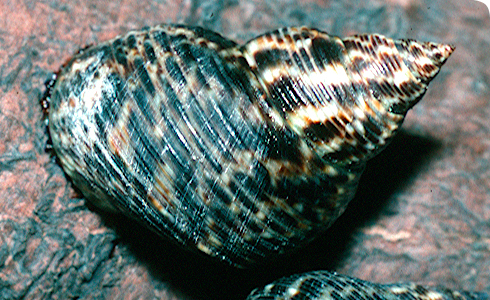Taxonomy
Up to ten Littoraria species can occur together in a single mangrove forest in the most diverse parts of the Indo-Pacific region, as at Singapore, and discrimination of the species can be difficult. Until 1986, when the taxonomy of the group was revised, most of these similar species of mangrove periwinkles were included under the name ‘Littorina scabra’. The wide, white columella of Littoraria scabra provides one of the best means of distinguishing this species from other similar members of Littoraria, which may have a wide columella that is purplish or brown, or alternatively a much narrower columella.
The most reliable character for the identification of Littoraria species is the shape of the penis in males. This is a forked structure located on the right side of the neck of the animal, and bears a single sucker-like gland and an elongate filament for transmission of sperm. In L. scabra the glandular limb is larger than that carrying the filament. It is believed that the penis is a species-recognition character that is used by the females to distinguish members of their own species, explaining why each species has a unique penial shape.
A molecular phylogeny (constructed from 28S rRNA, 12S rRNA and COI gene sequences) is available for 37 of the 39 members of the genus Littoraria, and this shows that L. scabra is a member of the subgenus Littorinopsis, and within this belongs to a clade that includes L. pallescens, L. philippiana and L. angulifera.
